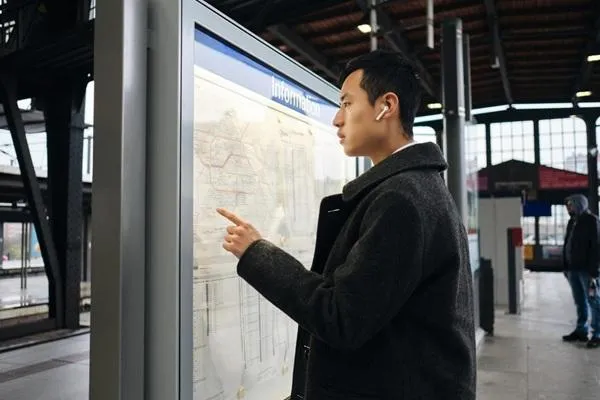240-447-5261
Blog

Blog

Interactive Virtual Tours to Enhance Metro System Engagement
Metro systems are a crucial part of public transportation, helping millions of people commute daily. However, understanding and navigating these vast systems can be daunting for many passengers. Interactive virtual tours offer a new way to simplify this experience before even stepping onboard. By allowing users to explore maps and station layouts digitally, these tours can transform how passengers feel about using metro services.
Virtual tours can serve as an engaging tool to alleviate uncertainties that commuters might have. Passengers can gain a better understanding of routes, station facilities, and transfer points without the stress of real-time decisions. This familiarity helps build confidence in using metro systems and can actually encourage higher usage rates. As cities grow and public transportation networks expand, such tools can play a vital role in improving operational effectiveness and user satisfaction.
The Role of Virtual Tours in Metro Systems
Virtual tours offer multiple benefits for metro systems. They aid users in better understanding station layouts and navigating complex routes with ease. By providing a detailed view of the metro environment, virtual tours can significantly enhance the experience of both frequent and new passengers. Passengers can explore the stations, discover amenities, and even learn about nearby attractions from the comfort of their homes or on their devices.
Engagement with passengers is increased as virtual tours provide an interactive and dynamic way to learn about metro services. These tours are not limited to static information; users can interact, zoom into areas of interest, and get a realistic feel of the stations. This comfort level can encourage commuters to rely more on the metro system, reducing hesitation they might face with new or changing routes.
Such tours have the potential to boost metro usage by familiarizing users with the system before they even step out. People are more likely to consider using the metro when they can visualize the journey and feel confident about it. This increased usage can lead to more revenue and a better final ride experience. Ultimately, virtual tours can transform apprehension into confident commuting, fostering a greater reliance on public transport systems.
Implementing Interactive Features for Better Engagement
For virtual tours to truly transform metro engagement, they need to incorporate interactive features that intrigue and assist users. Here's a list of key elements to consider:
1. Interactive Maps: Including zoomable and clickable maps allows users to explore specific stations and routes.
2. Guided Tours: Pre-set tours can highlight popular stations or essential facilities, catering to new users or tourists.
3. Information Pop-Ups: These can provide details about station services, operating hours, and nearby attractions.
4. Audio Descriptions: Offering audio guides can help visually impaired users or those who prefer auditory learning.
Interactive maps, for instance, allow passengers to visualize their trip and understand the available paths effortlessly. They can experiment with different routes, making the journey less daunting, especially for those unfamiliar with the system. Guides and real-time updates offer another layer of user support, helping commuters plan effectively.
Real-time updates inform passengers of any delays or changes, allowing them to adapt on-the-fly. These updates can be integrated through app notifications or on the virtual tour platform itself. This dynamic interaction keeps users informed and enhances their confidence in using metro systems. With these features, virtual tours can create a more streamlined and enjoyable planning experience for users.
Strategies for Promoting Virtual Tours to Passengers
Getting passengers interested in virtual tours requires a strategic approach. Start by identifying the most effective channels to reach your audience. Social media platforms are a great way to share engaging content and reach potential users. Visual platforms like Instagram and Facebook are perfect for showcasing snippets of the virtual tours. Regular updates and eye-catching graphics can help capture attention.
Email marketing is another effective tool. By sending targeted emails to current subscribers, you can inform them about the benefits of virtual tours. Including a call-to-action in these emails can direct users to explore the virtual tour link and enhance engagement. Segment your audience to cater messages specifically to newcomers or seasoned metro users.
Collaborating with local businesses is another viable strategy. Establish partnerships with businesses near metro stations, encouraging them to promote the tours to their customers. This mutually beneficial arrangement can help widen the reach of the virtual tours and bring more attention to the metro system. Together, these strategies can build a robust promotional campaign that engages a wider user base and increases virtual tour usage.
Measuring Success and Gathering User Feedback
To understand the impact of virtual tours, it’s essential to measure their success. Analyzing user engagement metrics can give valuable insights into what works and what doesn’t. Tracking metrics like tour views, average session duration, and click-through rates can provide clear data on user interaction.
Feedback is invaluable. Encourage users to leave comments or complete surveys about their experience. This can be done through pop-ups during or after the tour or via follow-up emails. Collecting qualitative feedback helps identify areas needing improvement. Use tools like Google Analytics to track usage patterns and capture data on user demographics and preferences.
Continuous improvement is key. Regularly updating content based on user insights keeps virtual tours fresh and relevant. Implement changes and monitor for further improvements in engagement. By doing this, virtual tours can remain a dynamic tool that consistently meets user needs and enhances metro experience.
Conclusion
Interactive virtual tours are redefining how people interact with metro systems. By focusing on creating engaging tools that blend technology and user experience, metro systems can transform how passengers plan and enjoy their journeys. This technology offers an exciting opportunity to stand out in public transportation by providing unprecedented access and convenience. As cities expand, innovative methods like virtual tours will play a crucial role in enhancing public transport infrastructure and services.
To leverage the benefits of interactive virtual tours, consider partnering with Connects 360 LLC. Our expertise in crafting immersive digital experiences can help metro systems develop engaging tours that attract more users and boost satisfaction. Let us assist you in creating virtual tours that could revolutionize passenger engagement and set your metro system apart.

© Connects 360° LLC |
Privacy Policy | All Rights Reserved
Created with Connects 360 Web Services.

© Connects 360° LLC | All Rights Reserved | Privacy Policy | Created with Connects 360 Web Services.





